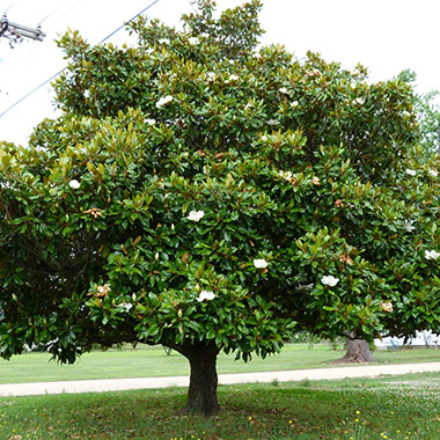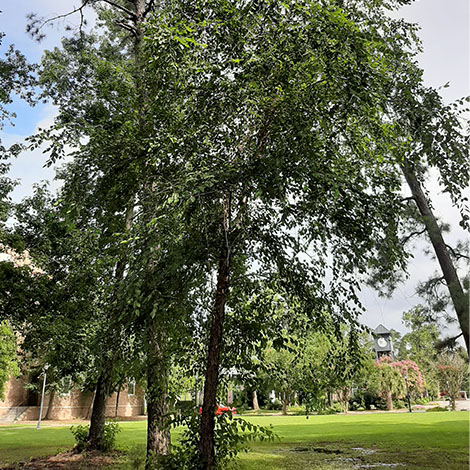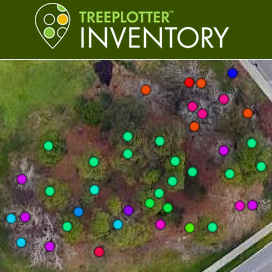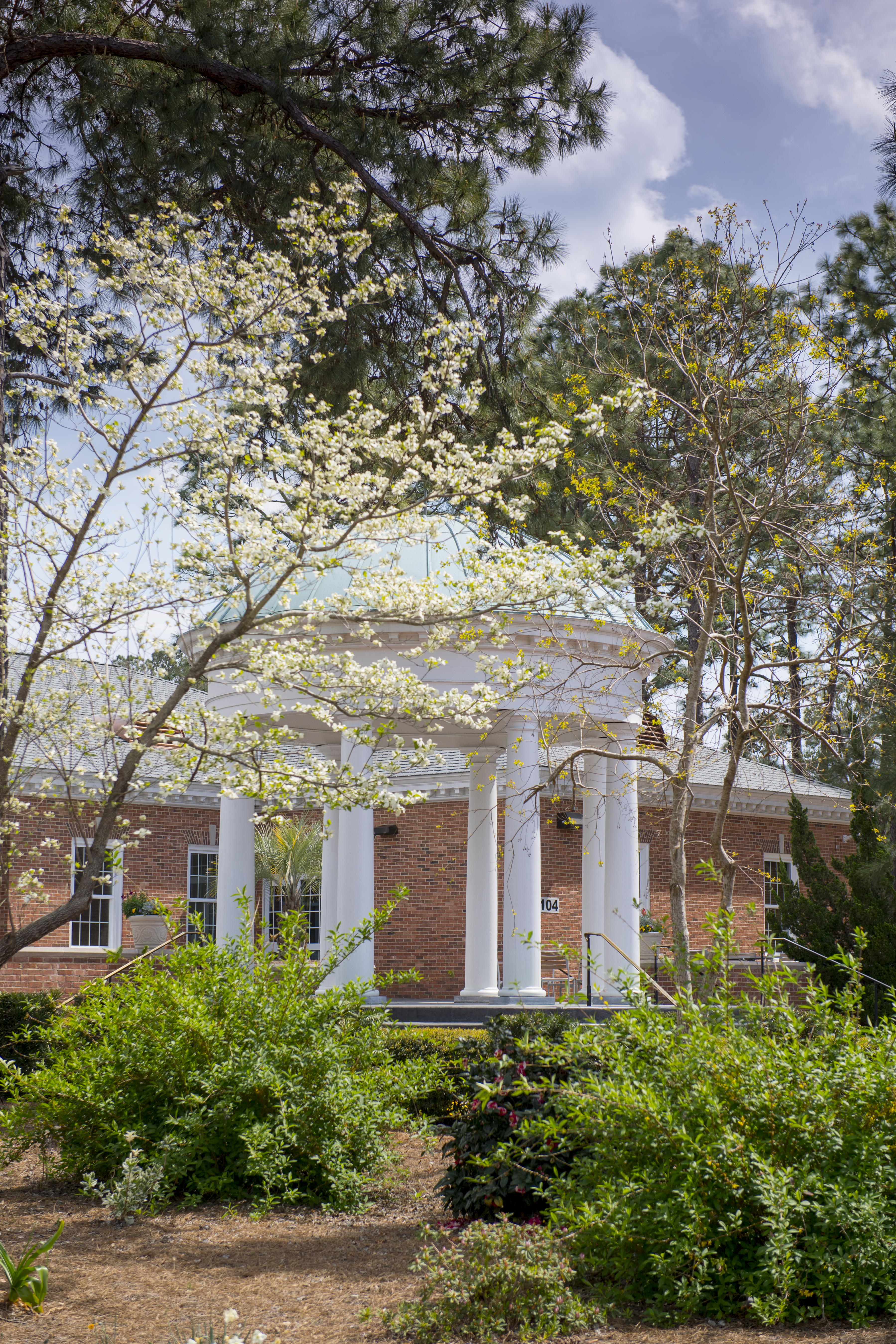CCU Arboretum
Southern Magnolia
 Common Name: Southern Magnolia
Common Name: Southern Magnolia
Scientific Name: Magnolia grandiflora
Species Range: The Southern Magnolia can be found in the southeastern United States ranging from Texas to Virginia. They are typically found in swamp forests, alluvial floodplains, maritime forests, and the woods of Coastal Plains.
Growth Characteristics: This conical-shaped evergreen can reach heights of 50-90 feet and grows best in full sun or partial shade. Its alternating leaves are dark green on the top and a rust-brown or greenish color on the underside. They can be 6-12 inches long with an elliptical shape and acute tips. Its bark will be smooth at first then get scaly, flat plates. The flowers on this magnolia are creamy white, very fragrant, and have about 6-12 petals blooming from May through June. It produces a cone-shaped aggregate fruit that is bright red and turns red/brown with age, maturing in October-November.
Ecosystem Service Value: The seeds from this magnolia are eaten by various types of birds and small mammals and the flowers are used by pollinators, mostly beetles.
Uses, Other Details: The Southern Magnolia tree is largely used for ornamental purposes. Its wood is used for furniture, paneling, veneer, and cabinetwork.
Threats: While the Southern Magnolia has properties that serve as its own personal pest deterrent, some insects will still make their way to the tree and cause damage such as the magnolia borer and the tulip-poplar weevil.
Species profile by Billie Rogers
References:
Kirkman, L. Katherine., et al. Native Trees of the Southeast: An Identification Guide. Timber Press, 2007.
“Southern Magnolia Magnolia grandiflora.” Arbor Day Foundation, https://www.arborday.org/trees/treeguide/TreeDetail.cfm?itemID=863. Retrieved November 8, 2020.








